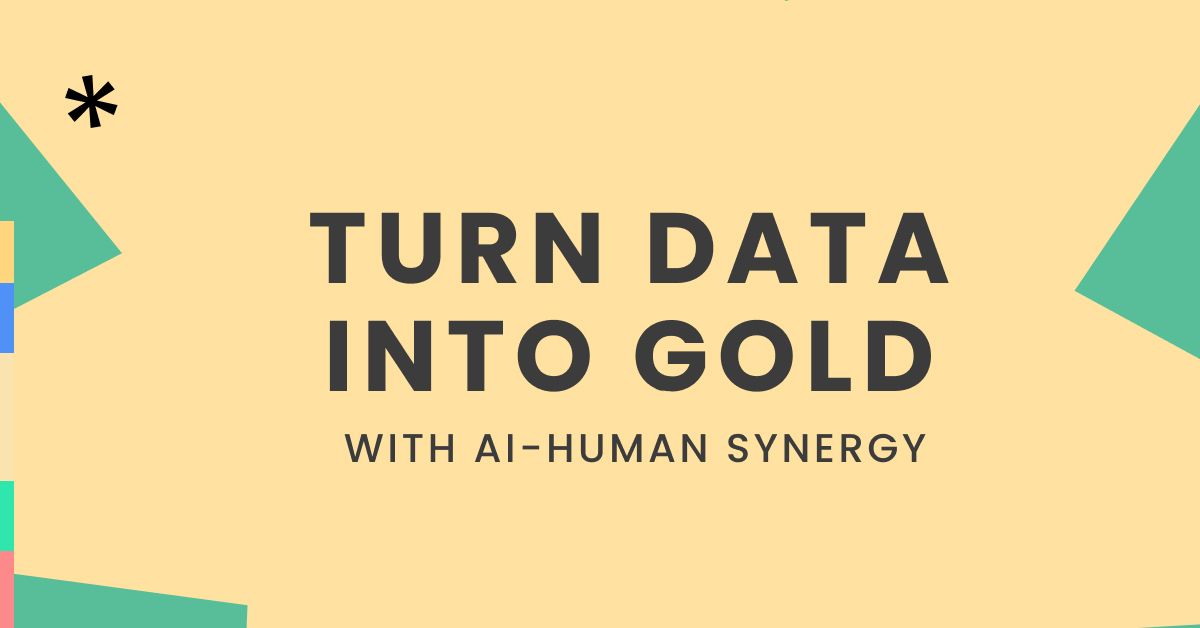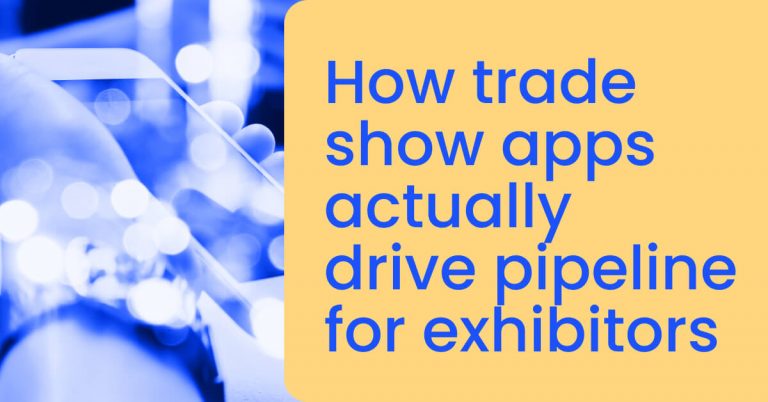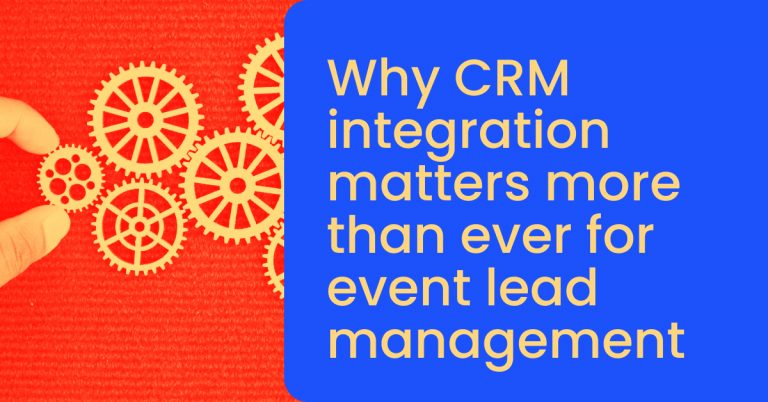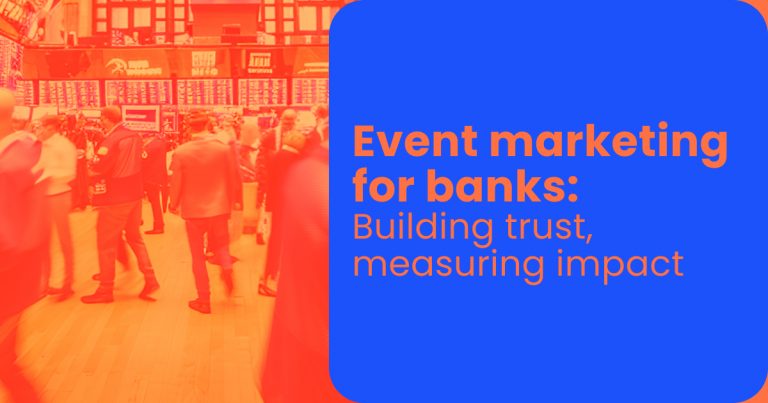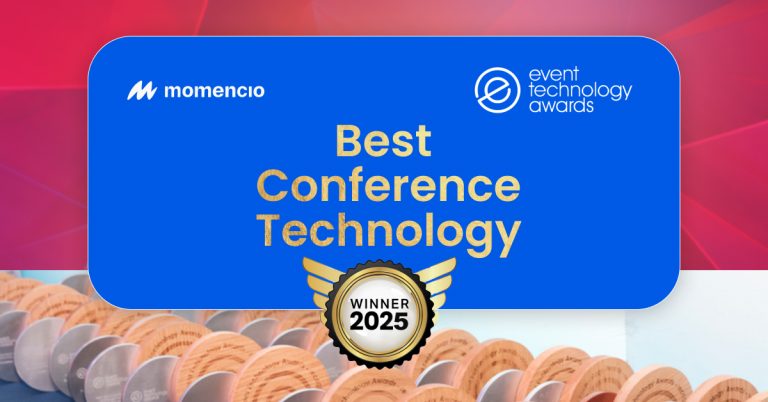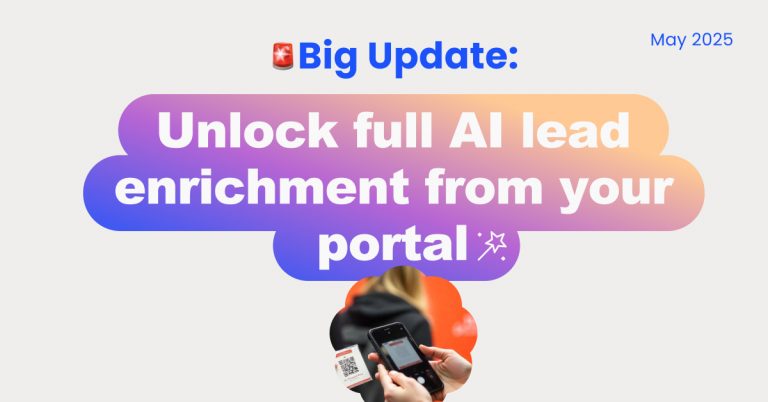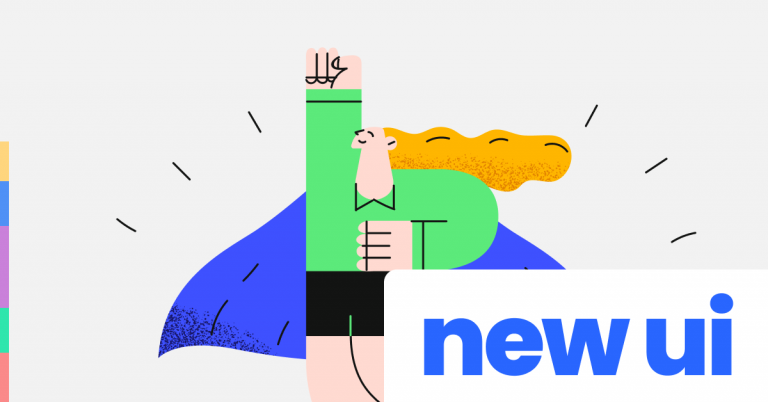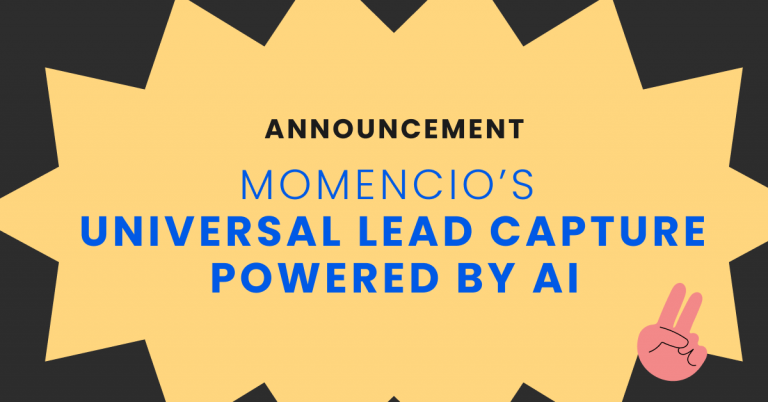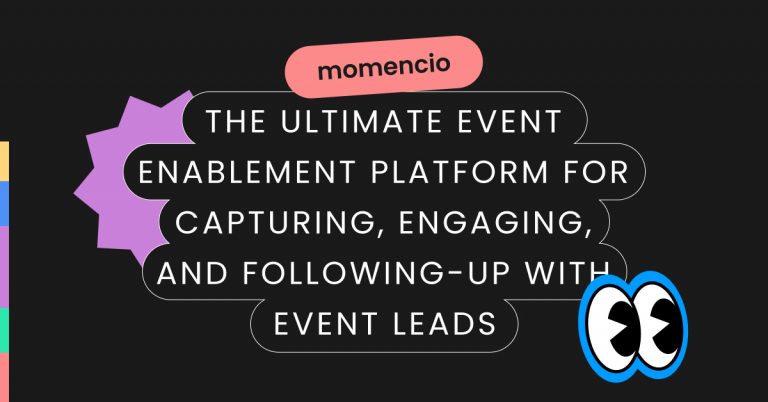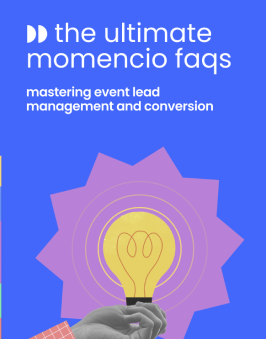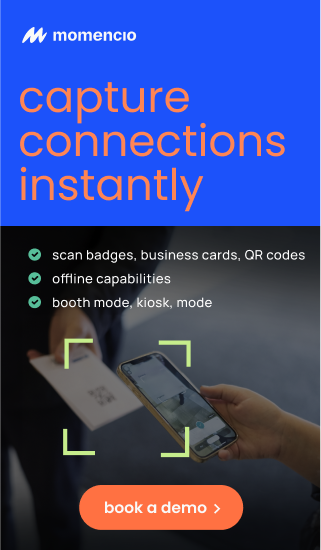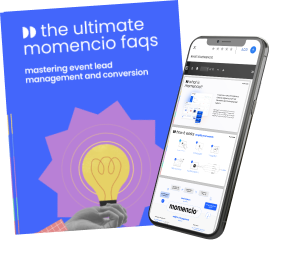Introduction
If you rely only on AI for lead generation at events, you would be leaving money on the table. Sure, AI is fast. It’s efficient. But when it comes to turning leads into customers, you need more than just data and algorithms.
AI can capture leads, score them, and even send automated follow-up emails. But here’s the thing: It can’t replace human intuition, empathy, or the ability to build real relationships.
Think about it – when was the last time an automated message closed a deal for you?
People buy from people. Especially at events, where face-to-face connections matter more than ever.
But, one hand cannot clap. So, what’s the smart move? Team up with AI.
Let AI handle the grunt work – enriching captured data, lead scoring, tracking attendee behavior, sorting through data. But let your sales team do what they do best: connect with people and close the deal.
In this article, we’ll dive into why the best AI lead generation strategies for events come from combining AI’s efficiency with the personal touch that only your sales team can provide.
How AI Improves Lead Generation at Events at Scale
AI’s strength lies in its ability to process large amounts of data quickly.
As an exhibitor, a very good day at an event where you see a constant influx of interested attendees frequenting your booth can quickly turn into a nightmare if you rely on traditional methods. It’s not only time-consuming but also inefficient. AI changes this by automating the collection of data, allowing you to see which attendees are engaging the most.
For example, AI can track attendee behavior, from session participation to booth visits, and organize leads based on that activity. Instead of waiting until after the event to analyze the data, AI gives you a prioritized list of leads who are showing high interest in real time. This makes follow-ups faster and more effective.
Imagine being at a large conference. AI captures everything from booth interactions to the time spent at sessions. By the end of the event, your team knows exactly which leads are worth pursuing, based on concrete data. This eliminates the guesswork and makes lead generation more focused.
AI speeds up the process, but it doesn’t replace the role of your sales team. It simply gives them better information, so they can focus on the leads that matter most.
Why Human Skills Are Still Critical In Converting Event Leads Into Customers
AI can track and analyze attendee behavior, but it can’t replace human connection. In the event industry, face-to-face interactions still matter. People do business with people, and it’s the natural conversations, the ability to read body language, and personalized responses that turn leads into loyal customers.
Sales reps can pick up on emotional cues and adjust their approach in real-time. For instance, if an attendee hesitates because of budget concerns, a human can immediately shift gears and offer a tailored solution to reassure them with the most valuable proposition. AI may recognize interest based on data, but it lacks the emotional intelligence to adapt on the spot.
Trust is another essential element in converting leads. Building trust through a handshake or answering questions directly during the event is something AI cannot replicate. Trust is created through human interaction, and that’s where your sales team adds the most value.
At the end of the day, AI might help you identify which leads to prioritize, but it’s the human touch that makes sure those leads actually convert into clients and later into advocates.
How AI + Human Skills Make For a Winning Lead Generation Strategy at Events
The best event lead generation strategy requires both AI and human effort. As we have said before, AI is perfect for handling mundane, data-heavy tasks. It can track attendees, collect lead contacts, and score leads based on their engagement. But when it comes to closing deals and building real connections, equipping your sales team with the right lead management tools is essential. The key is using each where they are strongest.
Start with AI to handle lead capture and enrichment. It can automatically collect information as attendees visit booths or interact with your event app. Instead of waiting until the event is over to sift through mountains of data, AI organizes it in real-time. Your team gets a prioritized list of leads ready for follow-up without the guesswork.
Once AI has filtered the data, your sales reps can jump in. The next step is what AI can’t do: creating a personalized follow-up, whether it’s a phone call, an email, or an in-person meeting. By using AI’s insights on attendee behavior, your team can tailor their approach, addressing exactly what each lead needs to hear, read, or see. It’s this blend of automation and human touch that turns potential leads into customers.
An AI-powered CRM system can be your best friend here. It not only helps manage leads, but also makes it easier to track conversations and progress through the sales funnel. AI can help sales representatives know the best time to follow up, but your team still needs to build trust and close the deal.
Enrich Your Event Leads for Maximum Conversion
Leads are only as good as the data you have on them. At an event, you capture basic information – contact names, email addresses, maybe company details – but most of the time, that data is incomplete. This is where AI lead enrichment makes the difference.
How it works: AI maximizes the coverage of information to fill in the missing details like company size, job titles, and even social media profiles, giving your sales team a 360-degree view of every lead. Instead of chasing down incomplete or irrelevant leads, your team can focus on qualified prospects with enriched profiles. This allows for hyper-targeted follow-ups that address the needs and pain points of each lead, increasing the likelihood of conversion.
Steps to maximize lead enrichment:
- Pre-Event Setup: Ensure your CRM or lead capture system integrates with AI lead enrichment tools. This way, as soon as leads are captured, the system works in real-time to enrich data.
- Real-Time Insights: Use enriched data during the event to prioritize leads that meet specific criteria, such as job titles, seniority, or company size.
- Post-Event Targeting: After the event, segment enriched leads into categories based on engagement, allowing your sales team to create tailored follow-up strategies that speak directly to each lead’s unique needs.
Why it matters: Enriched data equals smarter follow-ups. Instead of cold, generic messages, your team can reach out with personalized emails that reference specific pain points, positioning your solution as the perfect fit.
#ProTip: Don’t wait until after the event to enrich data. Integrate AI tools that work in real-time so that your team has enriched lead profiles during the event, allowing for immediate, personalized interactions.
Prioritize Leads Using Real-Time Engagement Data
While you may capture hundreds of contacts, the key to effective lead generation is identifying who’s truly engaged. Real-time engagement tracking enables you to prioritize leads based on their actual interaction with your content at the event (and even after), like attending key sessions, interacting with booth demos, or downloading content.
For example, imagine you are at a trade show and are equipped with a comprehensive AI-powered event app, giving you access to real-time data on booth visitors. You see that one attendee not only visited your booth twice but also spent a significant amount of time watching a product demo. This lead’s engagement data signals high interest, making them an immediate priority for your sales team. A quick, personalized message or in-person follow-up at the event can significantly increase your chances of closing a deal.
momencio’s intuitive lead scoring system identifies and prioritizes hot leads for you, eliminating guesswork from the equation.
Building Post-Event Reports That Drive Sales
Post-event reports are your blueprint for sales success. The insights captured during the event, such as attendee behavior, engagement patterns, and content interactions, provide a clear path for targeted follow-ups that convert.
Key elements to include in your post-event report:
- Engagement Hotspots: Identify which sessions, booths, or activities attracted the most engagement. Leads from these areas are more likely to convert.
- Lead Scoring by Activity: Your event app will provide your real-time scoring based on their level of interaction with your content—those who read your content multiple times or interacted with your booth are high-value prospects.
- Behavior-Based Segmentation: Use engagement metrics to create segmented lists for personalized follow-ups. For example, attendees who downloaded specific content can be sent tailored post-event emails discussing that topic further.
#ProTip: Set clear KPIs before the event (like session attendance or booth visits), and analyze these metrics afterward to craft your post-event sales strategy. Ensure that all leads are segmented based on engagement, allowing for tailored follow-ups that speak to their individual interests.
Conclusion
You already know that AI alone isn’t enough to turn leads into paying customers. It’s a tool, not a magic wand. Sure, it can collect data faster and analyze it better than any human ever could. But when it comes to closing deals and building lasting relationships, it’s your team that makes the difference.
Here’s the takeaway: the future of event lead generation is AI and humans working together. AI handles the data, gives you the insights, and speeds up the process. Then, your team steps in to do what they do best—connect, build trust, and convert leads into clients.
For your next event, think about how you can let AI do the heavy lifting while your team focuses on what really matters: turning those leads into long-term customers.
Don’t leave your AI lead generation strategy to chance. Explore how momencio’s AI enriched lead solution can help streamline your process and improve results.
FAQs
- Can AI completely replace human involvement in event lead generation?
- No, while AI can handle data collection and analysis, it lacks the emotional intelligence and adaptability that humans bring to building relationships and closing deals.
- What are the main benefits of using AI in event lead generation?
- AI improves efficiency by automating lead capture, tracking attendee behavior, and providing real-time data insights. This allows your sales team to focus on the most promising leads.
- How can AI and human skills complement each other in lead generation?
- AI identifies and prioritizes leads based on data. Human skills come in during the follow-up stage, where building trust and personalized communication are key to converting leads into customers.
- What tools can integrate AI and human efforts in lead generation?
- Tools like AI-driven CRM systems, lead scoring software, and event apps can automate the data-heavy parts of lead generation while keeping human interaction central to the sales process.
- What future trends can we expect in AI for event lead generation?
- AI will become better at predicting lead behavior, offering real-time insights, and integrating with more advanced event technologies. However, human interaction will remain critical for final conversions.
